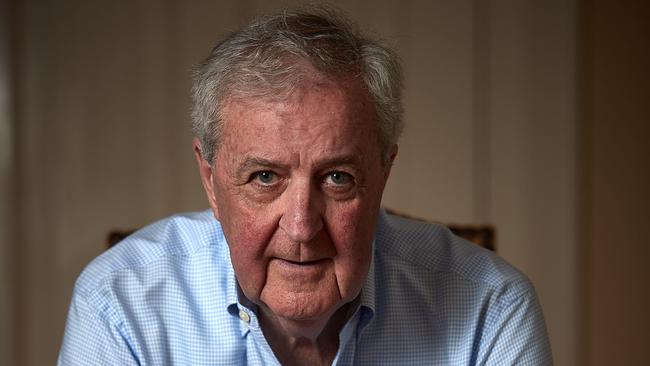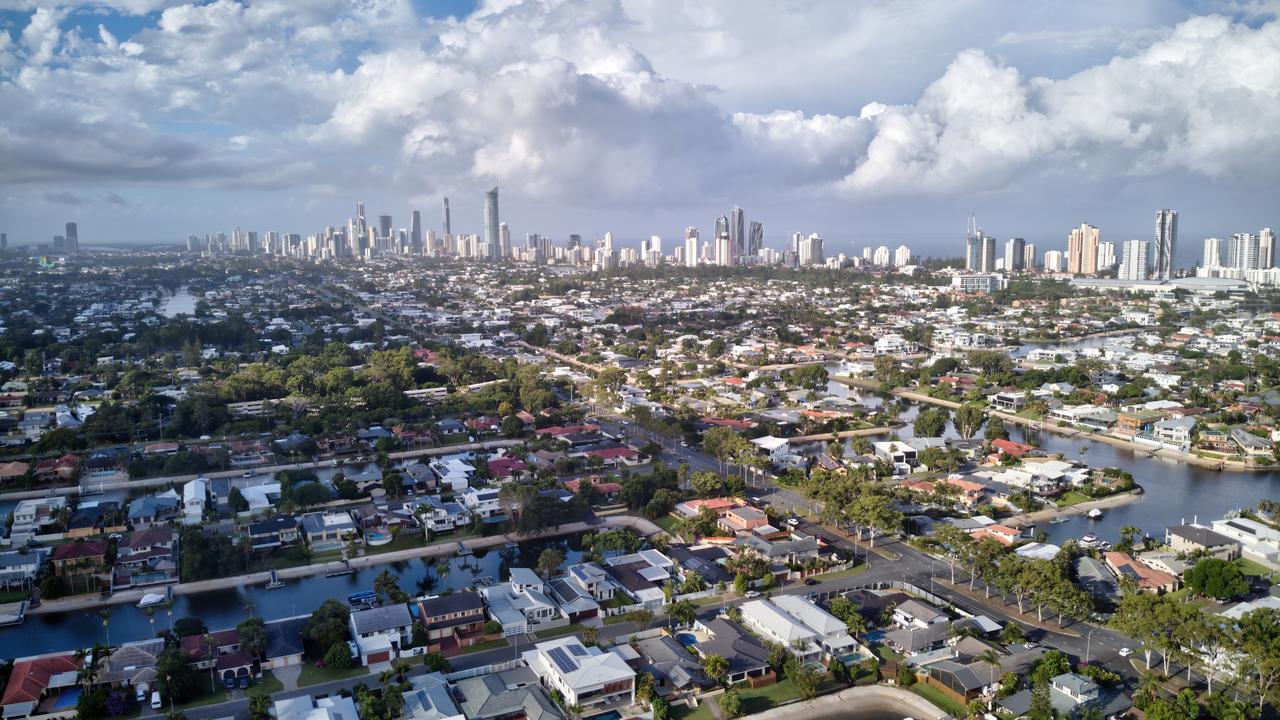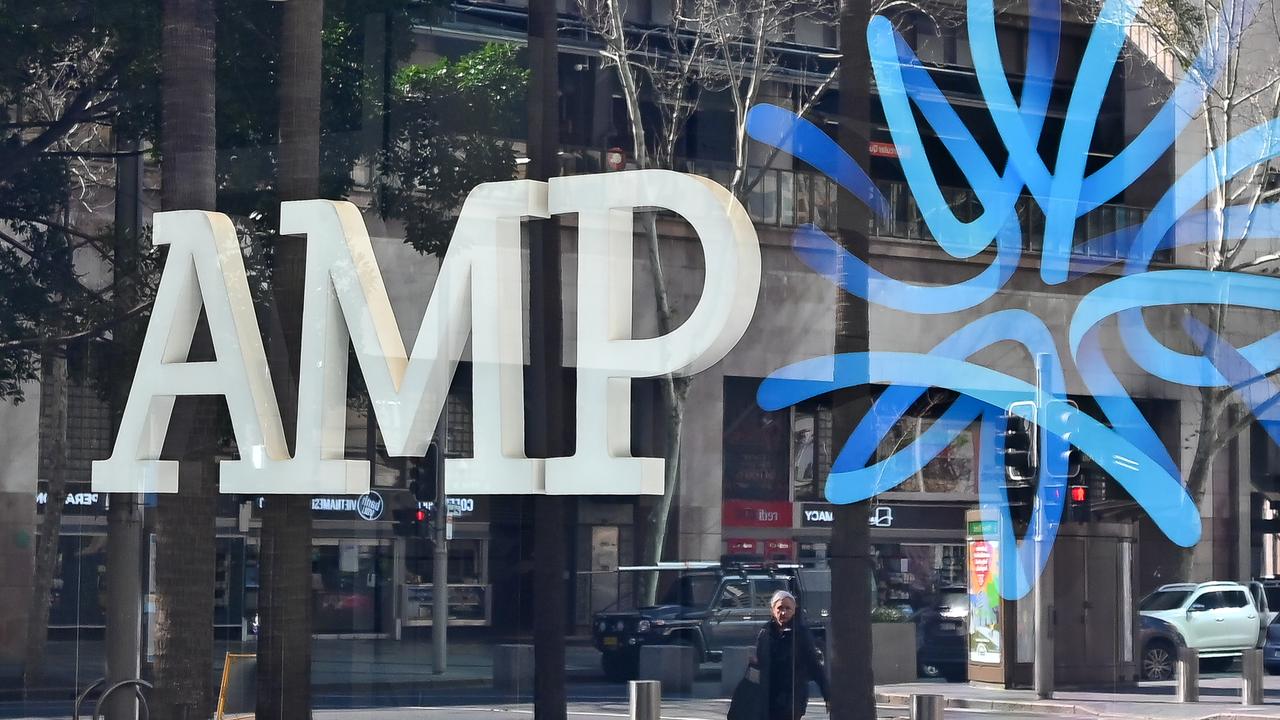Rates more likely to rise says former RBA boss Ian Macfarlane
Former Reserve Bank governor Ian Macfarlane has given a hawkish assessment of the outlook for inflation and interest rates.

Business
Don't miss out on the headlines from Business. Followed categories will be added to My News.
Former Reserve Bank governor Ian Macfarlane has given a somewhat hawkish assessment of the outlook for inflation and interest rates in Australia, saying it’s more likely “they’ll go up”.
While also doubling down on his criticism of the new model for the RBA board that is set to be adopted after the recent independent review of the central bank, Mr Macfarlane noted that Australia’s inflation rate was still well above those of its developed markets peers.
“For what it’s worth, most of the measures I look at for Australia usually start with the number five (per cent annualised) and most of the measures you look at for the US start with a number three or four,” he said. “But they’re still on the way down, but very slowly.”
Speaking at the Citi Australia & New Zealand Conference in Sydney, Mr Macfarlane said “I wouldn’t hold my breath” waiting for inflation to fall back to the RBA’s 2-3 per cent target band.
Mr Macfarlane said that, in its quarterly Statement on Monetary Policy in August, the RBA’s current forecast that Australia’s inflation rate wouldn’t fall below the top of its band until the second half of 2025 was a “reasonable assumption”. The RBA’s inflation forecast assumed the cash rate would peak at about 4.25 per cent before falling to about 3.25 per cent by the end of 2025.
After lifting the cash rate from a record low of 0.1 per cent to a decade high of 4.1 per cent in the 14 months to June, the RBA has left the cash rate unchanged at its past four monthly meetings.
Mr Macfarlane was Australia’s sixth RBA governor, serving from 1996 to 2006.
As for the surprisingly muted impact of the 400-basis-point lift in interest rates since May last year, he said the main channel through which monetary policy was “supposed to work” in Australia was by reducing the disposable income of mortgage holders. “Some of that is happening”, with household consumption now “pretty weak” and the residential construction sector “shrinking”.
The fact that economic growth rose less than the population in the first half of 2023 was “very unusual”, but rapid growth in the population and employment was supporting overall growth.
With the unemployment rate near a multi-decade low and the resources sector performing strongly, it was a “puzzling collection of data” and one that was “not easy to interpret”.
“It has been a surprise but I think there’s more contraction to come,” he added.
Still, Mr Macfarlane said he didn’t expect the RBA to cut interest rates next year.
“For a start, we’re not starting from a high level of interest rates – 4.1 per cent cash rate is not a very high level of interest rates,” he said. “It only looks that way because we were at zero.
“For a fall in the cash rate within the next year to occur, either inflation would have to come back to below 3 (per cent) within a year – which I think is highly unlikely – or there would have to be a deep recession, with a big rise in unemployment. I think that’s unlikely so I’m definitely in the higher-for-longer camp (on interest rates).”
In his opinion, the recent jump in bond yields occurred because the central banks that didn’t increase interest rates indicated that their unchanged policy didn’t signal the end of rate hikes.
“The interesting thing of course … particularly in the US, the jump in bond yields is tightening financial conditions more than if they had one increase in the Fed funds rate and the neutral statement,” he said.
His comments came as NAB expected quarterly inflation data this month to “challenge the RBA’s August inflation forecast”, leading it to lift the cash rate to 4.35 per cent in November.
NAB expects the September quarter CPI to rise 1.1 per cent on-quarter on both the trimmed mean and the headline measures, taking the annual measures back above 5 per cent.
“Such an outcome would be an upside surprise to the RBA’s August SoMP trimmed mean forecast of 0.9 per cent on-quarter, and should see the RBA revise up its inflation forecasts,” NAB economist Taylor Nugent said.
NAB expects market services inflation excluding travel and telecommunications, watched by the RBA as a measure of domestically sensitive inflation, to reach a fresh quarterly and annual high of about 7 per cent.
“Progress on disinflation to date has come almost exclusively from slower price rises for non-food goods and newly constructed houses,” Nugent said. “Those were the low-hanging fruit of the disinflation process, and we expect progress to continue, but slow from here.”
CBA said the RBA’s November board meeting was “live”.
“Our central scenario has the RBA on hold from here and we continue to look for an easing cycle to commence in mid-2024,” CBA head of Australian economics Gareth Aird said.
“But there is a clear near-term risk that the RBA delivers on its long-held hiking bias and increases the cash rate by 25 basis points at either the November or December board meetings.”
While his preliminary forecast for the September quarter CPI is broadly similar to the RBA’s implied profile, the monthly CPI indicator “means there is upside risk to our third quarter CPI forecast”.
Originally published as Rates more likely to rise says former RBA boss Ian Macfarlane



